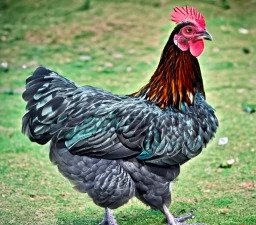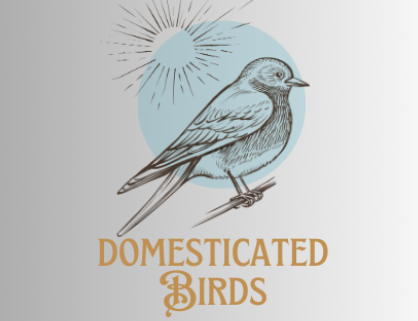Familiarize yourself with blue Australorp chicken origins, appearance, chicken facts, factors influencing egg production, boosting egg production tips, predators for blue Australorp chicken, and many more.
Introduction
The blue Australorp chicken is truly something to marvel at, isn’t it? With its stunning looks and incredible knack for laying eggs, it’s no wonder why poultry lovers everywhere are absolutely smitten. And let’s not forget, the blue Australorp chicken’s enchanting blue plumage adds an extra touch of elegance to its already captivating presence.
Blue Australorp Chicken Origin and History
Let’s take a trip back in time to uncover the fascinating origin and history of the blue Australorp chicken. This majestic breed emerged from the heart of Australia, where it was carefully crafted through selective breeding efforts.
You see, the blue Australorp is the result of crossing various heritage chicken breeds, including Orpingtons and Australorps, each contributing their unique traits to create this magnificent bird.
Blue Australorp Chicken Appearance
Blue Australorp Chicken color
Its feathers are adorned in a striking blue hue that extends throughout its entire body, setting it apart from all other poultry breeds.
Blue Australorp Chicken size and weight
Blue Australorp chickens are renowned for their robust build and substantial size. Fully grown hens typically tip the scales at 6.5 to 8.5 pounds, while roosters boast even more impressive weights ranging from 8 to 10 pounds. Despite their imposing size, these birds maintain a balanced and proportionate physique, making them well-suited for both egg production and exhibition purposes.

Blue Australorp Chicken Facts
Uniquely Beautiful
Let’s talk about the blue Australorp hens—they’re not just your average chickens. With their striking blue feathers that shimmer in the sunlight, they’re like living works of art. And here’s the thing: when the light hits them just right, you’ll notice this mesmerizing iridescent sheen that adds an extra touch of beauty to their already stunning appearance.
Gentle Giants
Now, you might expect big chickens to be a bit intimidating, right? Not these ones. Blue Australorp hens are known for their gentle and friendly nature. They’re like the big, friendly giants of the chicken world—perfect for families with kids or anyone looking for a laid-back feathered friend.
Jack of All Trades: Dual purpose
Okay, here’s something cool about blue Australorps: they’re not just great at laying eggs. Nope, they’re also pretty impressive when it comes to meat production. With their plump bodies and tasty meat, they’re like the Swiss Army knives of the poultry world—versatile and ready for anything.
Nature’s Little Explorers
You know how kids love exploring and finding hidden treasures? Well, blue Australorps are kind of like that too. They’re natural foragers, always pecking and scratching at the ground in search of tasty treats like insects and seeds. It’s not just about food though—it’s also about keeping busy and having fun.
Resilient Beauties
These birds might look fancy with their blue feathers, but they’re as tough as they are beautiful. Originating from Australia, they’re built to handle all kinds of weather and environments. So, whether you’re in the city or out in the country, these resilient beauties are up for the challenge.

Blue Australorp chicken Eggs
At what age do they start to lay eggs?
Blue Australorp chickens typically commence egg laying at around 5 to 6 months of age, showcasing their remarkable reproductive abilities early in life.
Australorp Egg color
Blue Australorp eggs are renowned for their rich brown or tinted shells, though there can be slight variations in color among individual birds.
Blue Australorp Egg production per year
On average, blue Australorp hens lay between 250 to 300 eggs annually, establishing them as prolific layers capable of consistently contributing to household egg provisions. This translates to approximately 5 to 6 eggs per week and 20 to 25 eggs per month, making them reliable suppliers of fresh eggs throughout the year.
Australorp Egg size: Just Right
Blue Australorp eggs boast a medium to large size, weighing approximately 55 to 65 grams each, rendering them suitable for diverse culinary applications and baking endeavors.
10 Egg-laying Chicken Breeds For Beginners: Choose The Best One. – Domesticatedbirds.com
Factors Affecting Blue Australorp Chicken Egg Production
Nutrition
Just like us, blue Australorp chickens need a balanced diet rich in protein, vitamins, and minerals to lay plenty of eggs. Research by Smith et al. has shown that providing access to high-quality poultry feed formulated for laying hens significantly boosts egg output and quality. Make sure they have access to grains, legumes, and insect sources for protein, along with calcium and vitamin supplements for strong eggshells and overall health. Happy, healthy hens lay more eggs!
Environment
For optimal egg production, provide your blue Australorp chickens with clean bedding, good ventilation, and ample nesting boxes. Just like us, they thrive in a clean and stress-free space. So, keep their coop tidy, ensure proper airflow, and provide cozy nesting spots. Happy hens lay more eggs!
Seasonal Shifts: Mother Nature’s Influence
Just like us, chickens can be affected by the changing seasons. During the warmer months, blue Australorp hens tend to lay more eggs, thanks to longer daylight hours and increased foraging opportunities. But when winter rolls around and daylight hours shorten, egg production can slow down. That’s where a bit of artificial lighting can come in handy to keep those hens on track.
Mood Matters: The Power of Positive Vibes
Believe it or not, the mood of your blue Australorp chickens can impact their egg-laying behavior. Happy, contented hens are more likely to lay eggs regularly, while stressed or anxious birds may hold back. Providing enriching activities, like dust baths or fresh greens to peck at, can help keep those spirits high and the eggs rolling in.
Genetics
The egg-laying capabilities of blue Australorp chickens are greatly influenced by selective breeding and genetic traits. According to research by Roberts et al., choosing breeding stock from reputable breeders is key to enhancing productivity in successive generations. Look for birds with strong egg production traits, such as consistent egg laying, large egg size, and prolonged laying periods. By selecting breeding stock wisely and observing these signs, you’re laying the foundation for a lineage of high-performing egg layers.

Maintain/Increase Blue Australorp Chicken Egg Production
Nutrient rich diet
Ever heard the saying, “You are what you eat”? Well, it applies to chickens too! To support strong eggshell formation and overall reproductive health in blue Australorp chickens, consider supplementing their diet with calcium-rich sources like oyster shells or limestone. Research has shown that these supplements can significantly enhance eggshell quality and reduce the risk of fractures (Smith & Jones).
Brighten Up Their Days
Maintaining a consistent light cycle, especially during the darker winter months, can help stimulate continued egg production in blue Australorp hens. By using artificial lighting to supplement natural daylight and ensuring a minimum of 13 to 16 hours of light per day, you can encourage your hens to keep laying eggs all year round (Brown et al).
Stress-Free Living
To promote optimal egg production and overall well-being in blue Australorp chickens, it’s essential to minimize stressors in their environment. Overcrowding, predator threats, and sudden changes in routine can all contribute to stress levels. By creating a calm and predictable environment for your flock, you’ll help them feel safe and secure, allowing them to focus on laying plenty of delicious eggs (Johnson & Smith).
Exercise Encouragement:
Getting blue Australorps moving has been a blast! They need exercise to stay healthy and productive. So, you can set up an obstacle course and scatter treats around the yard for them to hunt. And you know what? It will pay off big time in terms of egg production!
The Secret Sauce: Love and Attention
It’s a simple formula: Happy hens lay more eggs! You know, it’s incredible how a little love and attention can make all the difference for blue Australorps’ egg production. It has been found that spending time chatting, giving gentle pets, and yes, even belting out a tune or two has shown real results. It’s like they thrive on positive energy, and it is reflected in the number of eggs they lay.
Blue Australorps chicken predators:
As a chicken owner, you have to be well aware of certain predators.
Avian Predators: Blue Australorps are vulnerable to attacks from birds of prey such as hawks and owls, which may target them while free-ranging or roosting.
Mammalian Predators: Common predators like foxes and raccoons are known to prey on blue Australorps, particularly if coops or runs are not securely enclosed.
Canine Predators: Dogs, both wild and domestic, pose a threat to blue Australorps, especially if they are allowed to roam freely near the flock.
Snake Predators: Certain snake species, such as rat snakes, may target blue Australorp eggs or chicks, particularly in areas where snakes are prevalent.
Pros and Cons
Pros:
Hardiness: They’re resilient and can handle different weather conditions.
Low Maintenance: Blue Australorps are easy to care for, requiring minimal attention.
Beautiful Plumage: Their striking blue feathers add aesthetic appeal to any flock.
Versatile Foraging: Helping to reduce feed costs and keep pests under control.
Good Temperament: They have a calm demeanor, making them easy to handle and less prone to aggression.
Dual-Purpose Breed: They also have decent meat quality, making them a practical choice for small-scale farming.
Cons:
Broodiness: Some may exhibit broodiness, disrupting egg production.
Feather Pecking: In rare cases, feather pecking behavior may arise among flock members.
Space Requirements: They need vast space to roam and express natural behaviors.
Vulnerability to Predators: Their friendly demeanor can make them targets.
Conclusion
To wrap it up, the blue Australorp chicken is truly something special in the realm of poultry farming. Not only is it a stunning bird to behold, but it also packs a punch when it comes to laying eggs. This heritage breed has a charm that captures the hearts of enthusiasts and plays a vital role in providing us with wholesome food. By delving into the factors that affect egg production and adopting smart management techniques, we can keep our blue Australorps thriving and producing to their full potential. It’s all about striking that balance and giving these remarkable birds the care and attention they deserve.
What is the Blue Australorp Chicken Personality?
Blue Australorp chickens are beloved for their gentle and sociable nature, making them perfect companions for backyard settings and family environments. These curious birds thrive on interaction and are often seen happily engaging with humans.
What is the Lifespan of Blue Australorp Chickens?
On average, Blue Australorp chickens have a lifespan of 6 to 8 years with proper care and management. However, individual lifespans can vary depending on factors such as genetics, diet, and living conditions.
What is the Egg-laying Capability of Blue Australorp Chickens?
Blue Australorp hens are prolific layers, typically producing between 250 to 300 eggs per year.
How do Blue Australorp Chickens Compare to Black Australorps?
Blue and Black Australorps share many characteristics, including temperament and egg-laying capabilities. However, the key difference lies in their appearance, with Blue Australorps having blue feathers while Black Australorps have black feathers.
What is the Egg Color of Blue Australorp Chickens?
Blue Australorp eggs are renowned for their rich brown or tinted shells, though there can be slight variations in color among individual birds.

